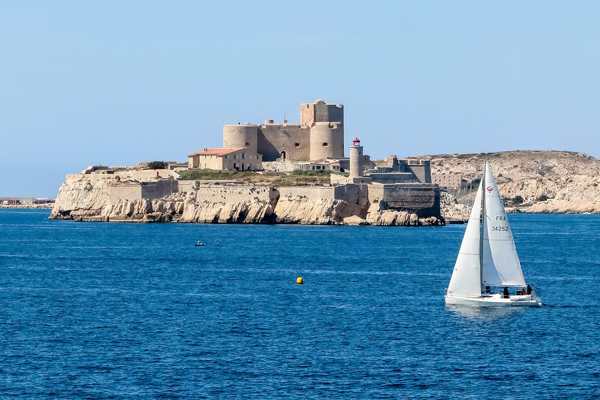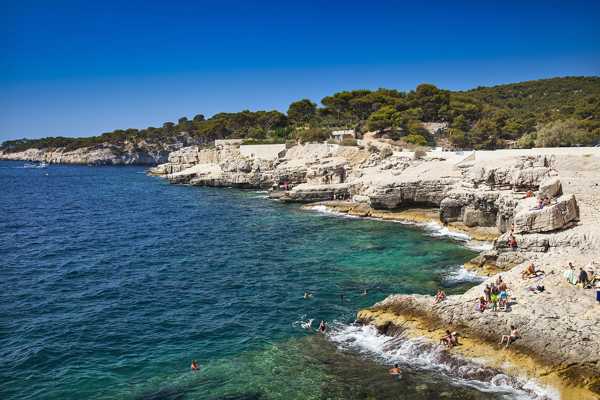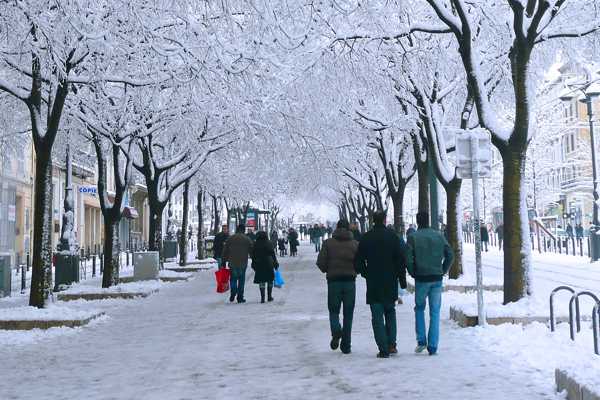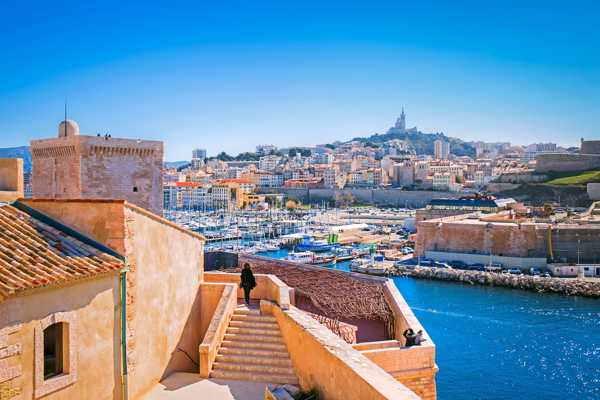Pomègues (Île Pomègues) is the largest of the Frioul Islands, an archipelago just off the coast of Marseilles. A total of 4 islands are part of the Southern France archipelago, the others being Ratonneau, If and Tiboulen. Pomègues is easily reached by boat from the Vieux Port in Marseille. Even so, the island manages to retain an unspoilt quality. Pomègues has a raw beauty.
Most people know it for its chalky-white cliffs, tiny creeks and breathtaking calanques (fjord-like bays that characterise the Calanques National Park). The pick of the coves on Pomègues is the Calanque de la crine, occasionally referred to as Tahiti beach because of its crystal-clear water. Read on to learn more about Pomègues in Marseille.
Pomègues in Marseille - one of the highlights of 10 Best Islands Around Marseille (Read all about Marseille here)
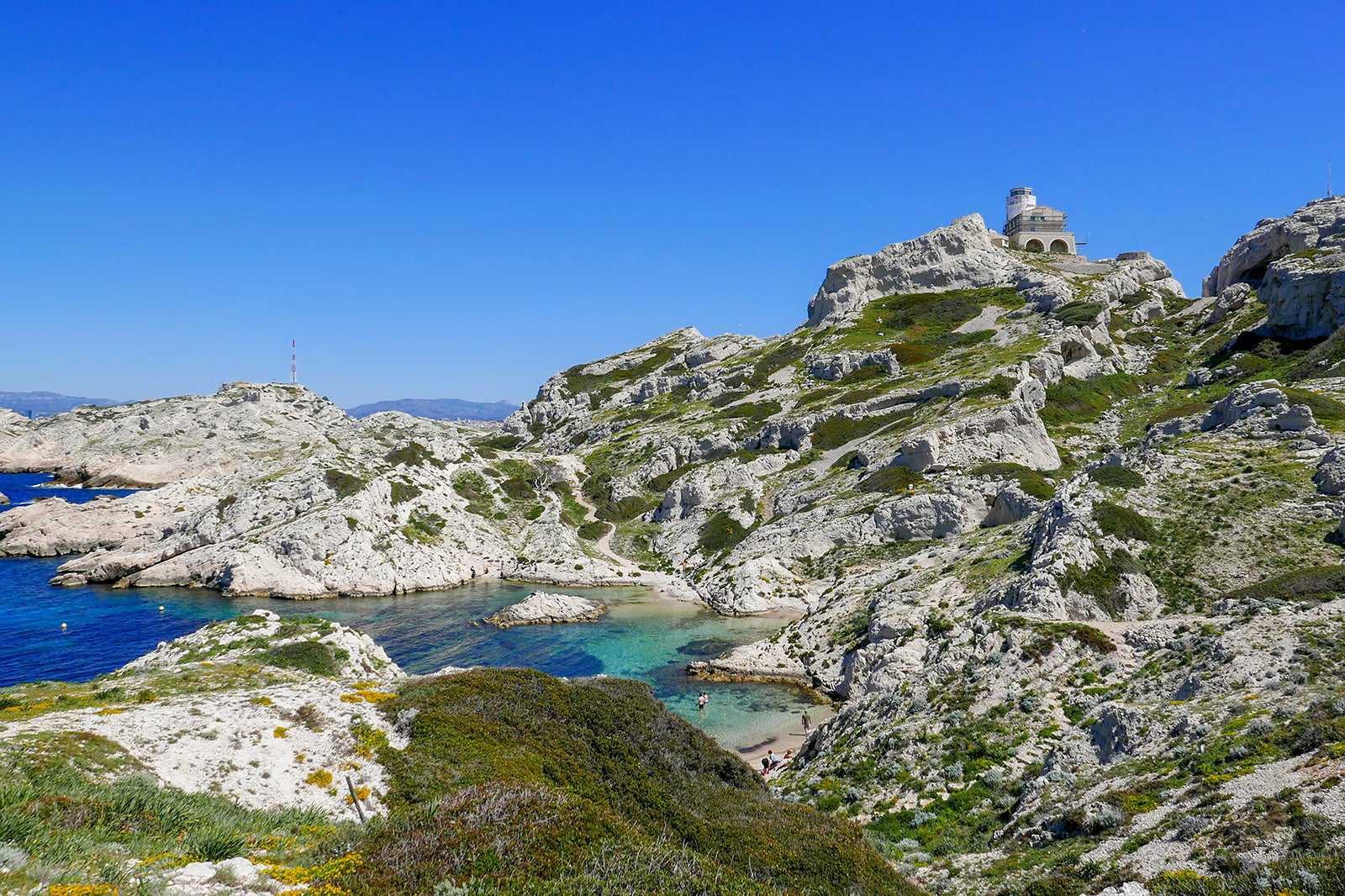
What are the highlights and features of Pomègues?
The island of Pomègues measures about 2.7 km in length. Visitors often come here to enjoy bird-watching. Numerous species frequent the island and its shoreline. The yellow-legged gull is a common sight, but you will also spot other types of seagulls, storm petrels, crested cormorants, and several types of shearwater.
Blue rock thrushes, peregrine falcons, kestrels, owls, Alpine swifts and European shags inhabit the cliffs of Pomègues. The European leaf-toed gecko is a nocturnal reptile that's also native to Pomègues.
Over the centuries, people have left their mark on Pomègues. Its isolated location made it an ideal choice as a quarantine island for those inflicted with contagious diseases.
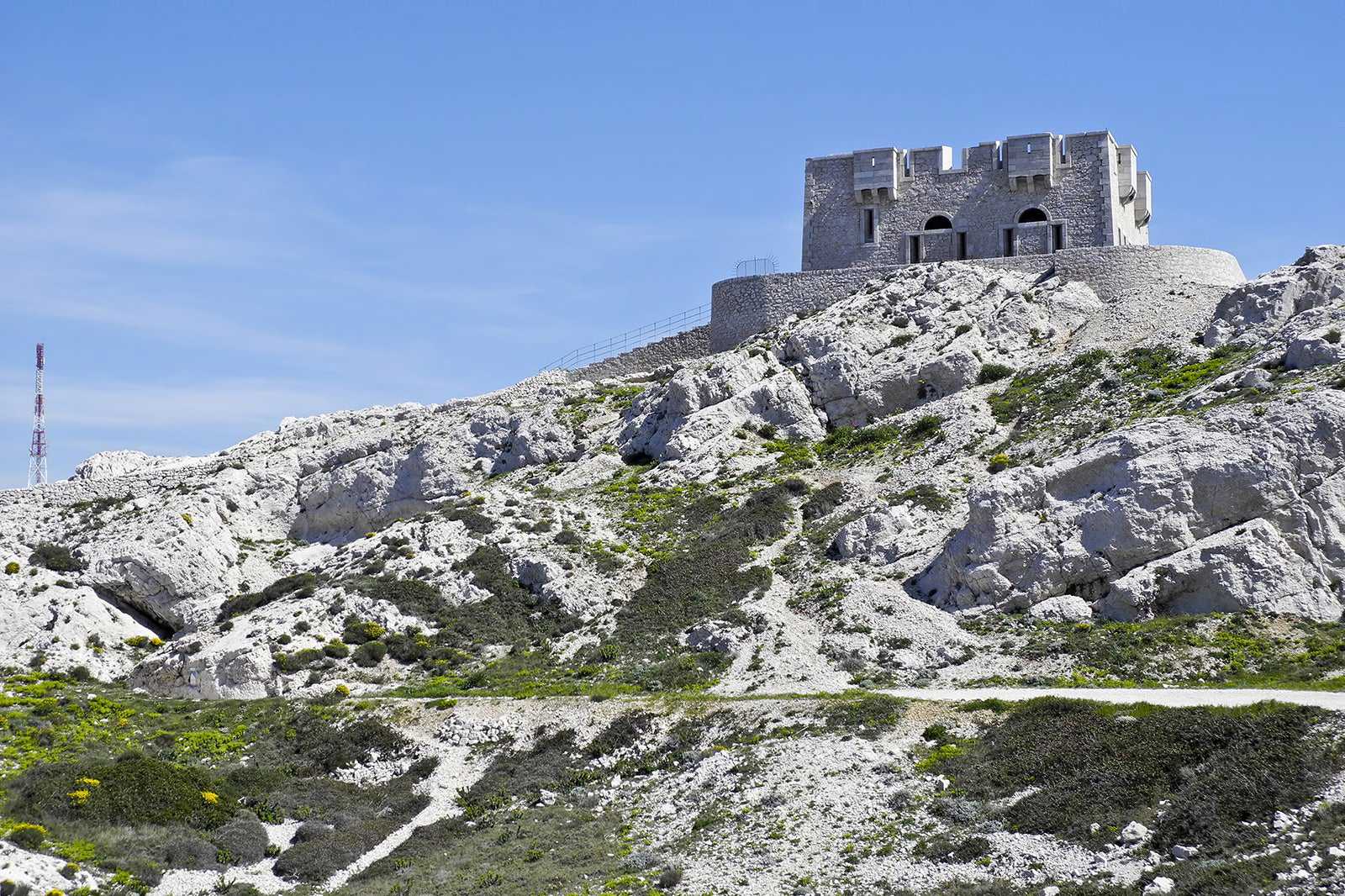
What else can I see or do on Pomègues?
A natural cove was designated as a port in the 17th century – in that spot, you’ll find a fish farm specialising in seabass and seabream. There are several fortifications on Pomègues. The Batterie de Cavaux is located southwest of the island. There's a footpath that leads to it, but you'll need to spend about 45 minutes on foot from the port.
The Sémaphore battery and Poméguet Tower are both located in the centre of Pomègues. The latter was featured in the French TV series Draculi & Gandolfi.
Fort Pomègues is in the northern end of the island, close to a mole constructed in the 19th century to connect it with Ratonneau.
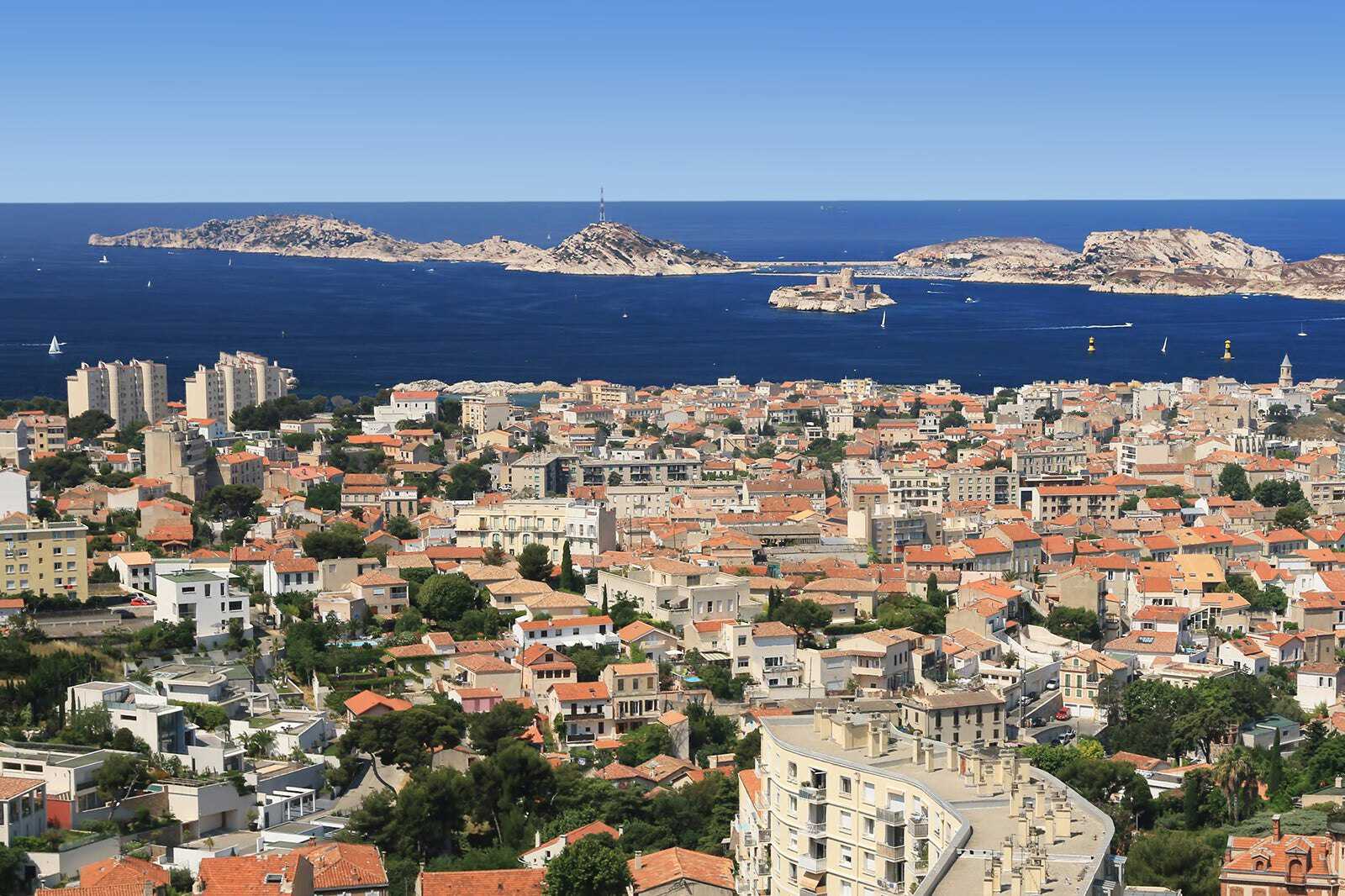
How is the weather like on Pomègues?
The island of Pomègues has a distinct microclimate influenced by the Mistral, a strong cold wind from the northwest. The weather is often hot and sunny, ideal for experiencing the island’s coastline and beaches.
The island has around 200 species of xerophytes and salt-tolerant halophytes. These plants have adapted to arid conditions. Some shrubs are common, such as mastic and rosemary. Aleppo pines cover the island in smaller numbers. Other plants such as sand lilies are not found anywhere else in Calanques National Park. Threatened species such as the sea daffodil and the Marseille Milk vetch also manage to cling on in this challenging environment.

mynd frá Patrick Nouhailler (CC BY-SA 3.0) breytt
Good to know about Pomègues
To get to Pomègues from the Vieux Port in Marseille, take the Line 1 ferry – the journey should take about 20 minutes. Pomègues doesn't have dining options, but it’s important to note that you will arrive at the dock on neighbouring Ratonneau, which has a sizeable marina and a good range of restaurants and cafés.
Many of these have terraces overlooking the waterfront. Locally-caught seafood is a speciality of the island, but there's an ice cream parlour if you want to treat yourself.
Similarly, a couple of souvenir outlets are on the Ratonneau side of the water. They sell the usual tourist items such as fridge magnets and postcards. Both Ratonneau and Pomègues are small enough to explore on foot, so the lack of businesses on Pomègues shouldn’t cause a problem for visitors.















